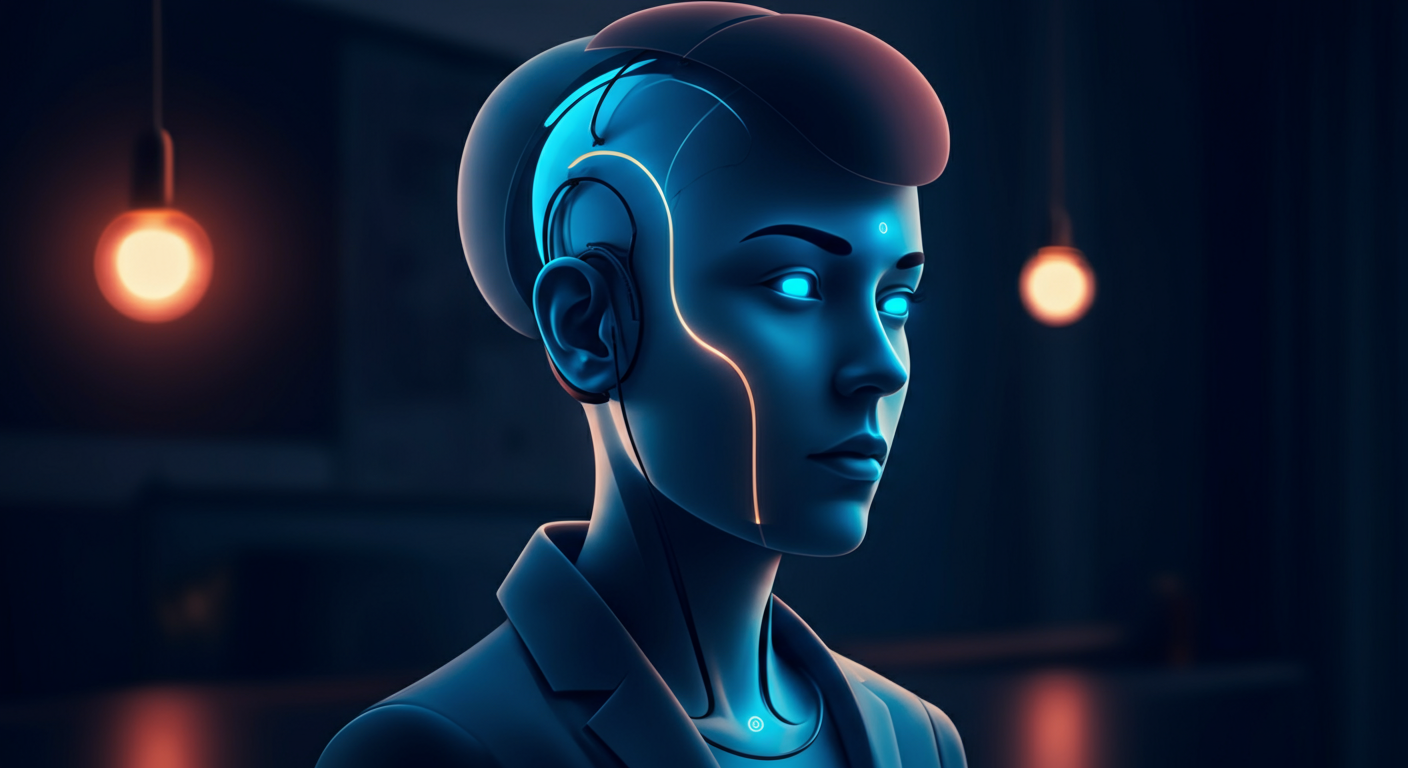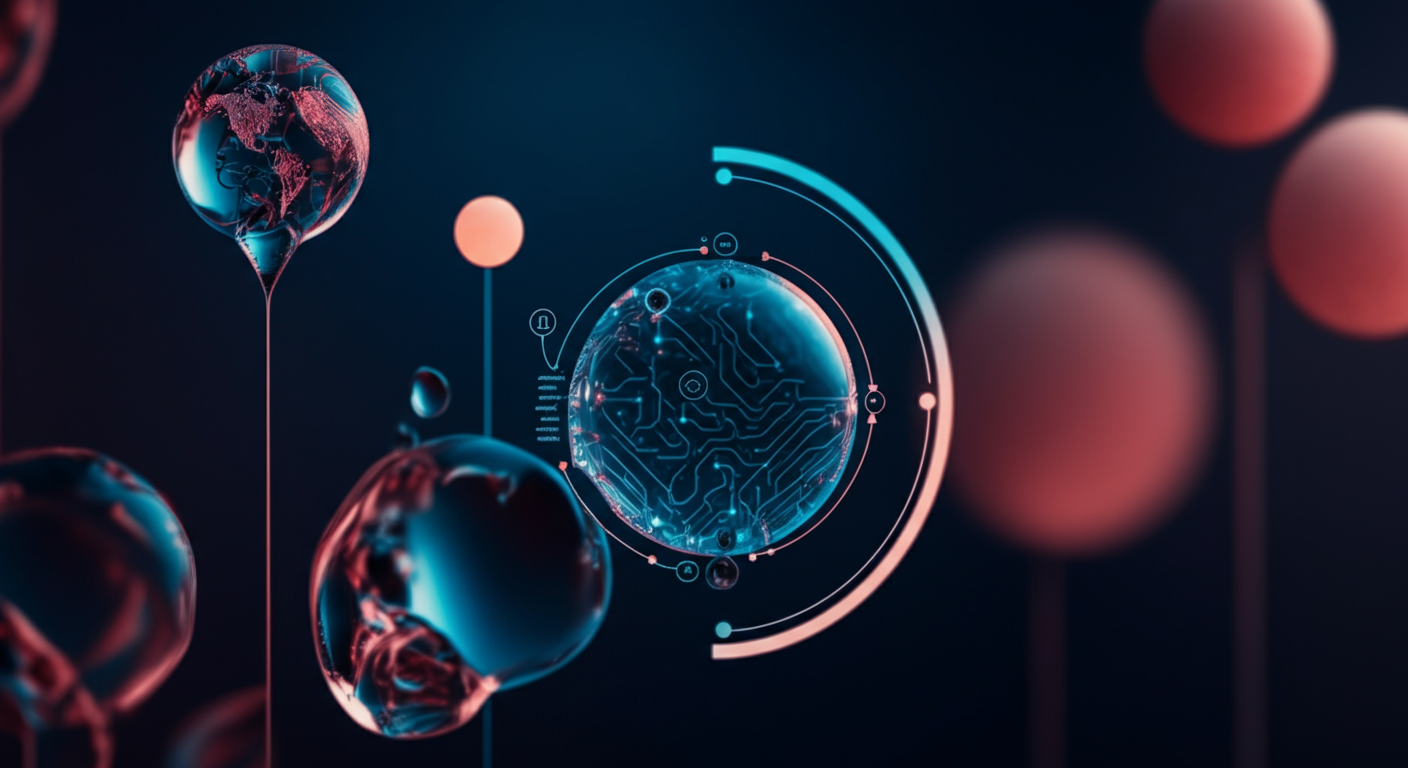AI Assistant Builders: Unleash Custom AI Power Without Code

The surging demand for AI tailored to specific business needs is fueling a revolution in custom AI assistant builders.
The Problem with Generic AI
Generic AI assistants, like ChatGPT, offer impressive capabilities, but they often fall short when applied to specialized tasks. Their broad training means they lack the nuanced understanding required for industries like healthcare, finance, or legal services.Custom AI: The Competitive Edge
Custom AI assistants provide significant advantages:- Increased efficiency: Automate tasks specific to your workflow, saving time and resources.
- Better accuracy: Trained on your data, they deliver more precise results than generalized models.
- Improved customer experience: Offer personalized support and interactions that generic chatbots can’t match. Example: A custom AI built for a specific SaaS product can answer questions, troubleshoot, and guide users with far more precision than a general-purpose AI.
- Competitive Advantage: AI in 2025: Hollywood vs Silicon Valley, Europe’s Sovereignty Push, and China’s Manufacturing Edge - AI News 11 Oct 2025 details how AI leadership impacts global competitiveness. Tailored AI offers that edge.
Build vs. Buy: The ROI Question
The 'build vs. buy' decision hinges on your needs and resources. If you need a highly specialized AI, building a custom solution might be more effective in the long run. However, carefully consider the development costs, time, and expertise required. Don't underestimate the potential for AI assistant ROI.In conclusion, custom AI assistant builders are rapidly changing how businesses leverage AI, offering increased efficiency and a stronger ROI, and opening new possibilities to gain a competitive edge. Next, we'll explore no-code AI platforms that put this power in anyone's hands.
AI assistant builders empower you to create custom AI solutions without needing extensive coding knowledge. Here's what to look for:
No-Code/Low-Code Interface
Ease of use is paramount, especially for non-technical users; a drag-and-drop interface simplifies the creation process. Consider Letzai, a no-code AI platform, for its user-friendly approach. These interfaces democratize AI, allowing anyone to build intelligent assistants.Data Integration Capabilities
"Data is the new oil," and an AI assistant is only as good as the data it can access.
- CRM: Connect to your customer relationship management system.
- Databases: Integrate with existing business databases.
- Spreadsheets: Easily use spreadsheet data. Look for tools like SheetAI for seamless integration with spreadsheets.
Customization Options
Your AI assistant should reflect your brand's voice and personality. Key features include:- Branding: White-label options let you present the assistant as your own.
- Voice & Personality: Tailor the tone and style to match your brand.
Training Data Flexibility
The best builders accommodate diverse data types:- Text: Train on documents and text-based conversations.
- Audio: Utilize voice recordings.
- Video: Extract insights from video content.
Scalability
Choose an AI assistant builder that can grow with your business. The ability to handle increased user loads and data volumes is essential for long-term success.Security and Compliance
Data privacy and security are non-negotiable. Seek builders with robust security measures and compliance certifications (e.g., SOC 2, GDPR).Integration with APIs and Other AI Tools
The best platforms offer API integrations to extend functionality, and consider using tools like Zapier to connect your AI assistant to various services.Analytics and Reporting
Performance metrics are crucial for continuous improvement. Analytics should track usage, identify areas for optimization, and provide insights into user behavior.Choosing the right AI assistant builder requires careful consideration of these features to ensure it aligns with your specific business needs. It’s an investment in efficiency, innovation, and a competitive edge.
Unlock custom AI power without needing to write a single line of code, thanks to the rise of AI assistant builders.
Top AI Assistant Builder Platforms: A Detailed Comparison

Many platforms now offer the ability to create custom AI assistants tailored to specific needs. Here's a comparison:
- Botsonic: Botsonic empowers businesses to create tailored AI chatbots, offering integrations and customization without requiring coding expertise, improving customer interactions and streamlining internal processes.
- Overview: A no-code platform for building AI chatbots.
- Key Features: Integrations with various data sources, customizable workflows, and multi-platform deployment.
- Pricing: Tiered plans based on message volume and features.
- Pros: User-friendly interface, rapid deployment, and strong support.
- Cons: Limited advanced features for complex scenarios.
- Use Cases:
- E-commerce: Handling customer inquiries and order tracking. Example: An online store uses Botsonic to automate responses to common questions, freeing up human agents.
- Internal Support: Automating help desk tasks for employees. Example: A large corporation implements Botsonic to assist employees with IT and HR-related queries, significantly reducing response times.
- CustomGPT: CustomGPT enables businesses to create AI chatbots trained on their own data, delivering personalized and accurate customer support, lead generation, and internal knowledge sharing.
- Overview: Focuses on training AI chatbots with your own data.
- Key Features: Document uploading, knowledge base creation, and customizable responses.
- Pricing: Subscription-based, varying with the amount of data processed.
- Pros: Enhanced accuracy based on specific datasets, excellent for niche applications.
- Cons: Requires initial data setup and ongoing maintenance.
- Use Cases:
- Legal: Providing instant access to legal information and precedents. Example: A law firm builds a CustomGPT assistant to quickly retrieve relevant information from their case files.
- Medical: Assisting healthcare professionals with diagnostic information retrieval. Example: A hospital uses a CustomGPT chatbot to provide doctors with rapid access to medical research and patient history, improving diagnostic accuracy.
- Dialogflow: While not strictly no-code, Dialogflow offers visual development tools to design conversational interfaces and virtual agents, making it accessible for building robust AI assistants.
- Overview: A Google Cloud platform for creating conversational interfaces.
- Key Features: Intent recognition, entity extraction, and pre-built integrations with various services.
- Pricing: Usage-based, factoring in API calls and resource consumption.
- Pros: Scalable, robust, and backed by Google's AI infrastructure.
- Cons: Steeper learning curve than purely no-code solutions.
- Use Cases:
- Customer Service: Automating complex customer support interactions. Example: A telecom company uses Dialogflow to handle customer complaints and troubleshoot technical issues.
- IoT Integration: Creating voice-controlled interfaces for smart devices. Example: A smart home developer integrates Dialogflow with their IoT platform, allowing users to control appliances with voice commands.
- Chatbase: Chatbase allows you to create a custom chatbot from your website content, PDFs, or other data sources, providing instant and accurate responses to user inquiries.
- Overview: Enables creating AI chatbots from existing content sources.
- Key Features: Data import, automated training, and customizable styling.
- Pricing: Varies based on the size of the knowledge base and usage.
- Pros: Quick setup, easy content integration, and immediate value generation.
- Cons: Limited flexibility in advanced conversation design.
- Use Cases:
- Education: Supporting students with instant access to course materials. Example: An online learning platform uses Chatbase to create a chatbot that answers students' questions about course content, improving engagement and learning outcomes.
- Documentation: Providing easy access to complex product documentation. Example: A software company uses Chatbase to turn its extensive documentation into a chatbot, making it easier for customers to find answers quickly.
Custom AI assistants are changing how businesses operate, and understanding their practical applications is key to unlocking their full potential. Let's explore some real-world examples.
Customer Support: Enhanced Efficiency and Personalization
- Personalized Responses: AI assistants can analyze customer data to provide tailored solutions, moving beyond generic replies.
- Automated Ticket Routing: Intelligent routing ensures inquiries reach the right department quickly.
- 24/7 Availability: Offering round-the-clock support improves customer satisfaction. Consider using ChatGPT to get started, a powerful tool that enhances customer interactions through automated, personalized responses.
Internal Knowledge Base: Streamlining Employee Operations
- Answering Employee Questions: AI can instantly answer common HR or IT questions.
- Streamlining Onboarding: Automating the onboarding process reduces administrative burdens.
- Improving Productivity: Quick access to information helps employees perform tasks more efficiently. For example, using an AI assistant for internal use can significantly boost productivity.
Sales and Marketing: Boosting Lead Generation and Conversions
- Lead Generation: AI can identify and qualify leads.
- Personalized Product Recommendations: Suggesting the right products boosts sales.
- Automated Email Campaigns: Sending targeted emails increases engagement. Companies are increasingly using marketing automation AI tools to generate leads and nurture prospects efficiently.
Healthcare: Revolutionizing Patient Care
- Patient Monitoring: Remote monitoring provides timely intervention.
- Appointment Scheduling: AI can automate appointment bookings and reminders.
- Medical Information Retrieval: Accessing patient records quickly saves time and improves accuracy. Explore AI in healthcare use cases to see how these tools can transform medical services.
E-commerce: Enhancing Shopping Experiences
- Product Search: AI-powered search makes it easier for customers to find what they need.
- Order Tracking: Providing real-time updates improves customer satisfaction.
- Customer Service: Addressing customer inquiries promptly enhances the shopping experience.
Education: Personalized Learning and Support
- Personalized Learning: AI tailors content to individual student needs.
- Automated Grading: Automating grading saves teachers' time.
- Student Support: Providing 24/7 support enhances learning outcomes. Delve into AI in education applications to understand how AI assists students and educators.
It's now possible to create custom AI assistants without needing to code, offering unprecedented flexibility for businesses and individuals.
Step-by-Step Guide: Building Your First AI Assistant

Creating your AI assistant is easier than you think, thanks to no-code platforms. Here's a breakdown of the process:
- Define your goals and target audience: What problem will your AI assistant solve, and who will benefit most? For example, an e-commerce store might build an assistant to handle customer inquiries, while a Software Developer Tools company could create an assistant to help with debugging.
- Choose the right AI assistant builder platform: Several platforms exist, like ChatGPT, each with its strengths. Consider features, ease of use, and pricing.
- Gather and prepare your training data: High-quality data is essential for a smart assistant.
- Design the conversation flow and personality: Plan out how your assistant will interact with users. What will its tone be? What questions will it ask? A well-defined AI chatbot design guide ensures a smooth user experience.
- Train and test your AI assistant: Most platforms offer tools to train your assistant using your prepared data. Thoroughly test its performance and refine its responses.
- Integrate and Deploy: Next is custom AI assistant deployment with your current system.
- Monitor and improve: Continuously monitor your AI assistant's performance, gather user feedback, and refine its training data. AI is never "done;" it requires ongoing maintenance.
AI Assistant Builders: Unleash Custom AI Power Without Code
The future of AI assistants is bright, with generative AI paving the way for unprecedented personalization and capabilities.
The Generative AI Revolution
Generative AI is transforming AI assistants, making them more creative and adaptable. For example, ChatGPT, a powerful conversational AI model, can now be customized to handle specific tasks, industries, or even personal preferences. This shift means AI assistants are becoming less generic and more tailored to individual needs.The Rise of NLU and NLG
Natural Language Understanding (NLU) and Natural Language Generation (NLG) are key to the next generation of AI assistants. Consider this:- NLU: Enables assistants to understand complex queries and nuances in human language.
- NLG: Allows them to respond in a way that feels natural and engaging, rather than robotic.
Multimodal AI Assistants
The future of AI assistants extends beyond text, embracing multiple modalities. Multimodal AI assistants can process voice, text, images, and even video, opening up exciting possibilities:Imagine an AI assistant that can analyze an image you provide and generate a detailed description, or one that can understand and respond to voice commands while simultaneously displaying relevant information on a screen.
This integration of modalities makes AI assistants far more versatile and useful in various contexts.
Metaverse and Virtual Reality Integration
The integration of AI assistants with the metaverse and virtual reality is creating immersive experiences. Imagine an AI assistant that guides you through a virtual world, providing information and assistance as needed. This blend of AI and immersive technologies is paving the way for new forms of interaction and engagement.Ethical Considerations
As AI assistants become more integrated into our lives, ethical considerations become paramount. Ensuring fairness, transparency, and privacy is crucial for building trust and preventing misuse. Responsible ethical AI development is essential to ensure that these powerful tools are used for good.As AI continues to evolve, these trends will shape the future of AI assistants, offering exciting new possibilities for businesses and individuals alike. Now is the time to explore these possibilities and harness the power of AI to transform the way we work and live.
Measuring Success: Key Metrics for Your Custom AI Assistant
Creating a custom AI assistant opens a world of possibilities, but how do you know if it's actually successful? It's more than just lines of code working. Measuring the right metrics is crucial.
Customer Satisfaction & Resolution
Customer satisfaction (CSAT) scores are a direct line to your users' perception. Did your AI assistant solve their problem effectively? High scores mean happy users. Crucially, the resolution rate (how often the AI resolves issues without human intervention) reveals its true problem-solving capability. Aim for a high rate!
Efficiency & Cost Savings
Average handling time (AHT) is key. Is the AI assistant reducing the time it takes to address customer inquiries compared to traditional methods? Cost savings are a massive win. By automating tasks, a custom AI assistant should demonstrably reduce operational expenses. Consider pricing intelligence tools to get a competitive edge.
Business Impact
- Lead Generation: How many qualified leads is your assistant generating? More leads mean more potential revenue.
- Employee Productivity: Is the AI handling routine tasks, freeing up employees for higher-value work? Employee productivity gains translate to significant business benefits.
Defining & Tracking KPIs
"What gets measured, gets managed." - Peter Drucker
Before launch, define specific, measurable KPIs related to customer satisfaction, efficiency, and business impact. Use tools like data analytics platforms to track progress and identify areas for improvement. Don't forget to explore our comprehensive AI Glossary for helpful definitions!
By focusing on the right metrics, you can fine-tune your AI assistant and ensure it delivers real value to your business. Now, how can you choose the best AI assistant builder for your needs?
Keywords
AI assistant builder, custom AI assistant, no-code AI, AI chatbot platform, AI automation tools, build AI assistant, AI assistant for business, train AI assistant, AI assistant platform comparison, best AI assistant builder, AI virtual assistant, AI powered chatbot, create AI assistant, custom chatbot solution, AI customer service automation
Hashtags
#AI #ArtificialIntelligence #Chatbots #NoCodeAI #AIAutomation
Recommended AI tools

Your AI assistant for conversation, research, and productivity—now with apps and advanced voice features.

Bring your ideas to life: create realistic videos from text, images, or video with AI-powered Sora.

Your everyday Google AI assistant for creativity, research, and productivity

Accurate answers, powered by AI.

Open-weight, efficient AI models for advanced reasoning and research.

Generate on-brand AI images from text, sketches, or photos—fast, realistic, and ready for commercial use.
About the Author

Written by
Regina Lee
Regina Lee is a business economics expert and passionate AI enthusiast who bridges the gap between cutting-edge AI technology and practical business applications. With a background in economics and strategic consulting, she analyzes how AI tools transform industries, drive efficiency, and create competitive advantages. At Best AI Tools, Regina delivers in-depth analyses of AI's economic impact, ROI considerations, and strategic implementation insights for business leaders and decision-makers.
More from Regina

